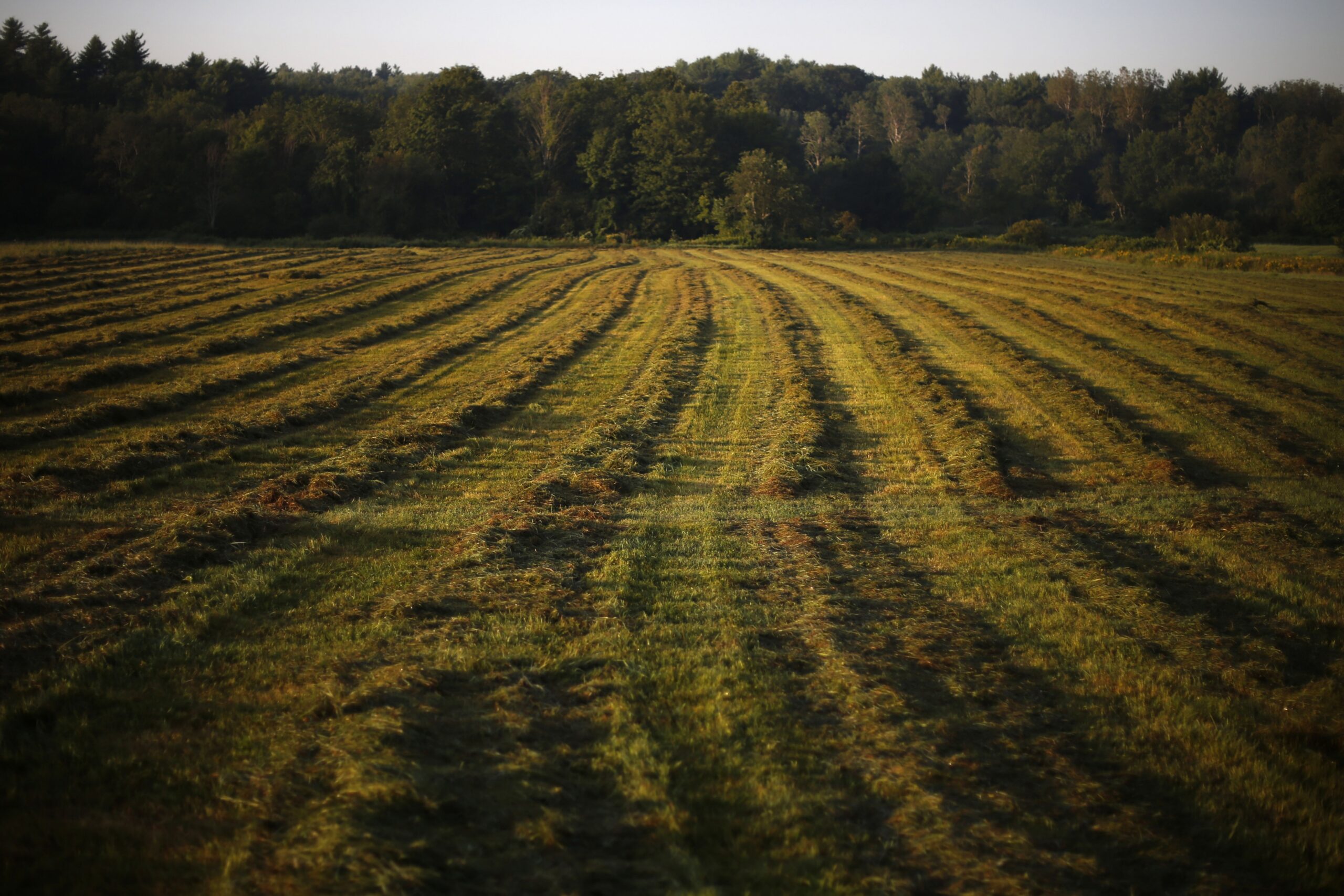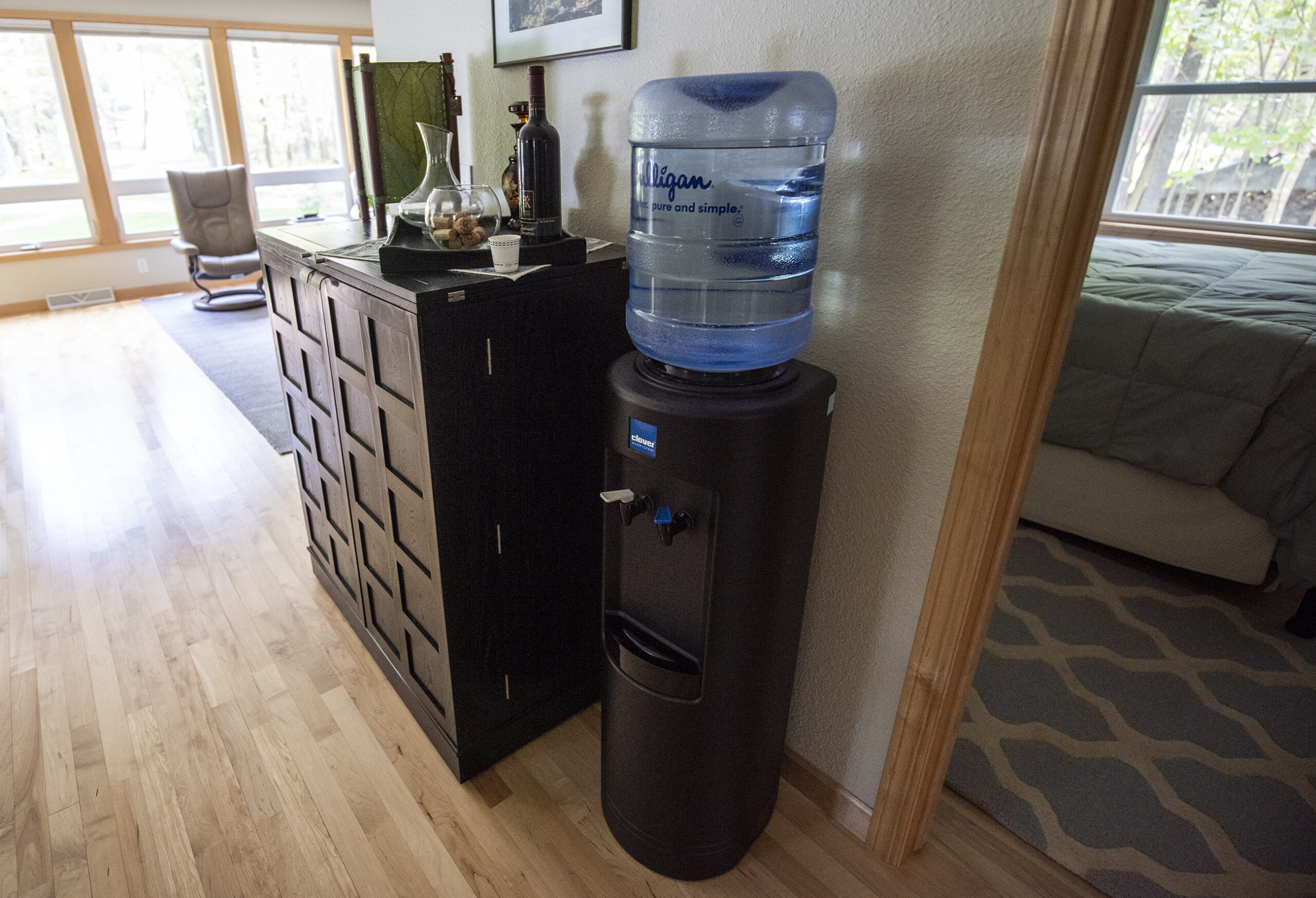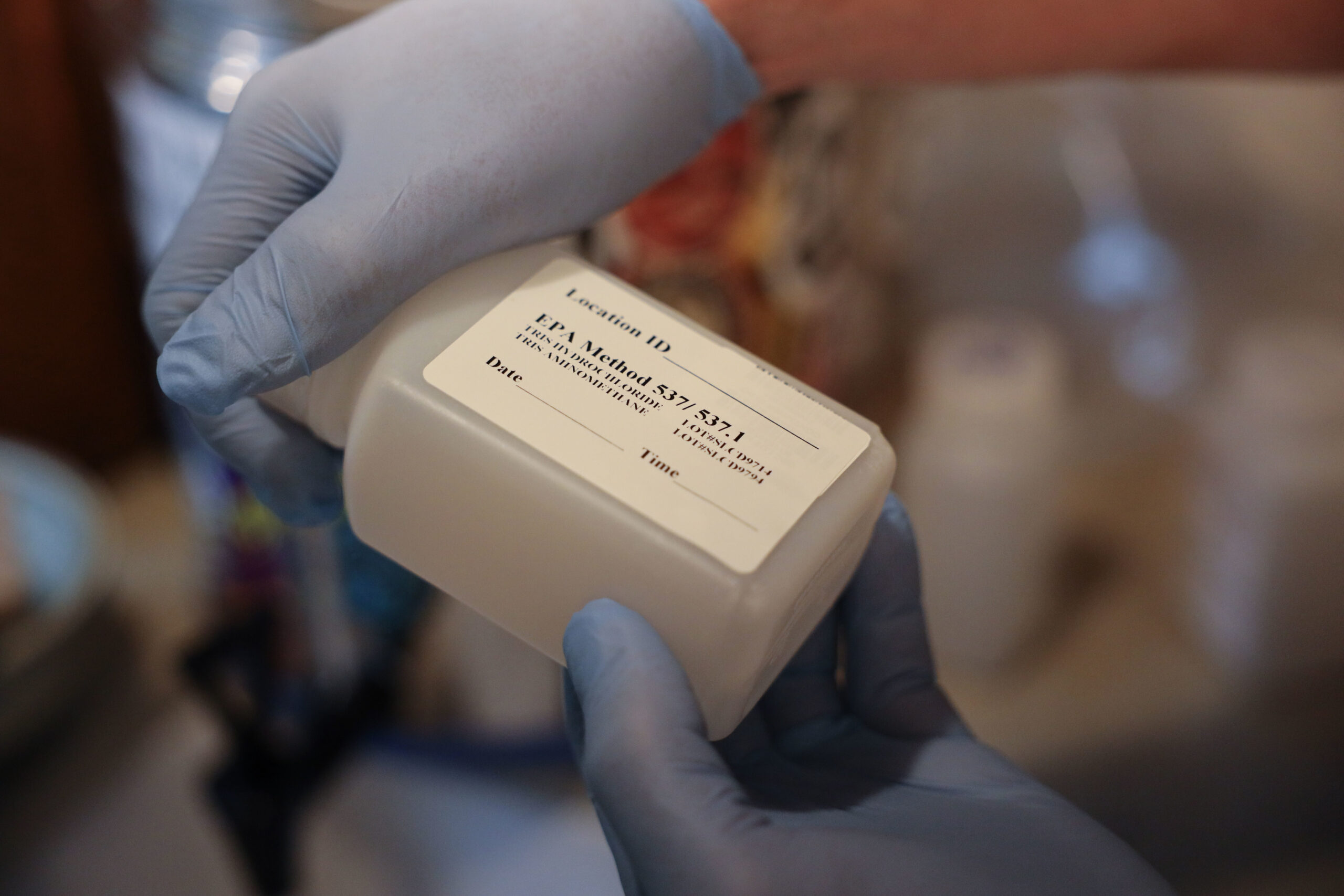Town of Stella residents have filed a lawsuit against Minnesota-based 3M and a Rhinelander paper mill over waste spread on farmland that they say is responsible for PFAS contamination of private wells.
Lucas and Alisha Rougeau, Carrie and Kerry Brenton, and Timothy and Melissa Gerdman filed the suit last week in federal court against the two companies and other unnamed “John Doe” defendants. They say Ahlstrom Rhinelander LLC and previous mill owners spread waste that contained PFAS on farm fields in Oneida County, causing unsafe levels of the chemicals in private wells.
“It was this ‘land application’ of waste that caused Plaintiffs’ wells to be among the most contaminated in the country for PFAS,” the complaint states.
Stay informed on the latest news
Sign up for WPR’s email newsletter.
The homeowners are seeking class action status for their legal action. If granted, more people affected by PFAS contamination as alleged in the suit could join as plaintiffs.
In a statement, Addie Teeters, head of marketing communications and public affairs with Ahlstrom, said that it’s the company’s policy not to comment on pending litigation.
“While we are still reviewing the complaint, it appears to focus on activities that are alleged to have occurred prior to Ahlstrom’s acquisition of the Mill in 2018,” Teeters said.
In a statement, a 3M spokesperson said the company’s management of PFAS has changed as the science, technology, and societal and regulatory expectations surrounding the chemicals has evolved.
“We have and will continue to deliver on our commitments – including remediating PFAS, investing in water treatment, and collaborating with communities,” Carolyn LaViolette, communications strategist for 3M, said. “3M will continue to address PFAS litigation by defending itself in court or through negotiated resolutions, all as appropriate.”
Residents filing the suit say the harmful chemicals have been detected at levels ranging as high as 1,660 to 2,910 parts per trillion in their wells. That’s between 20 and 40 times higher than the state’s drinking water standard of 70 parts per trillion. Those levels are also hundreds of times higher than drinking water standards proposed by the Environmental Protection Agency.
PFAS, short for per- and polyfluoroalkyl substances, are a class of thousands of synthetic chemicals used in products like cookware, food wrappers and firefighting foam. Research shows high exposure to PFAS has been linked to kidney and testicular cancers, fertility issues, thyroid disease and reduced response to vaccines over time.
The lawsuit states 3M knew the chemicals were toxic by the 1970s, and the company documented increasing levels of PFOS — one of the two most widely studied chemicals — in the bodies of 3M workers that were suspected to cause birth defects in children of employees.
Brett Land, an attorney with Texas-based law firm Baron & Budd, said his firm has acquired records that indicate Ahlstrom spread millions of pounds of waste on farm fields near residents for decades. He said public data indicates 3M sold the mill products containing PFAS that were used in its manufacturing process.
“The EPA’s health advisory levels are below levels of detection, and here we have PFAS in this community that have been found in wells at over 40,000 parts per trillion,” said Land. “You’re talking about basically millions of times over the health advisory level from the EPA, and it’s really scary. I really, really feel for everyone in this community, and I really hope that we can make some progress and help them.”
Land said his clients are unable to use well water for drinking and cooking, noting they’re also concerned about using the water to grow produce. Residents are suing to recover the costs of removing contamination from their wells and their properties, along with the costs of treating water, securing bottled water, loss of earnings, lost property value and other damages.
The Wisconsin Department of Natural Resources said earlier this week that the extremely high levels of PFAS means that some Stella residents will have to permanently rely on an alternative source of drinking water. Testing has shown 47 homes in the community have PFAS levels that exceed the state’s recommended health-based standards of 20 parts per trillion.
While the state passed drinking water standards last year, no limits for the chemicals currently exist in groundwater. The Natural Resources Board failed to sign off on health-based limits for the chemicals in groundwater last year. Around one third of state residents rely on private wells that draw from groundwater.
The DNR has since relaunched efforts to craft regulations for 16 PFAS chemicals based on guidelines recommended by the Wisconsin Department of Health Services. The agency is considering both individual and combined standards for those substances.
PFAS have been detected in private and public wells across Wisconsin. Some cities and towns affected include Wausau, La Crosse, Eau Claire, Madison, Milwaukee, Marinette, town of Peshtigo and town of Campbell. Roughly 800 public water systems tested so far are meeting the state’s drinking water standards for the chemicals, but around 4 percent would exceed the EPA’s proposed standards of 4 parts per trillion.
Hundreds of communities nationwide have sued 3M and other chemical companies for pollution of their public water supplies, including Wausau, La Crosse, and Dane County.
Gov. Tony Evers and Wisconsin Attorney General Josh Kaul recently joined a coalition to oppose a $10.3 billion settlement proposed by 3M over PFAS pollution of public water systems. They said the money isn’t anywhere near enough to remove or treat contamination. They also said the deal fails to address concerns beyond drinking water, and it could place public water systems and their ratepayers on the hook for future costs to address the chemicals.
The American Water Works Association has estimated that treatment of PFAS in drinking water could cost up to $38 billion nationwide. The 2023-25 state budget includes $125 million to address PFAS contamination statewide.
Republican lawmakers have authored a bill on how that money would be spent to help communities address the chemicals. The proposal is still making its way through the legislative process, although environmental groups and residents are voicing concerns about industry-supported provisions that would weaken the DNR’s authority to address the chemicals.
Wisconsin Public Radio, © Copyright 2025, Board of Regents of the University of Wisconsin System and Wisconsin Educational Communications Board.




